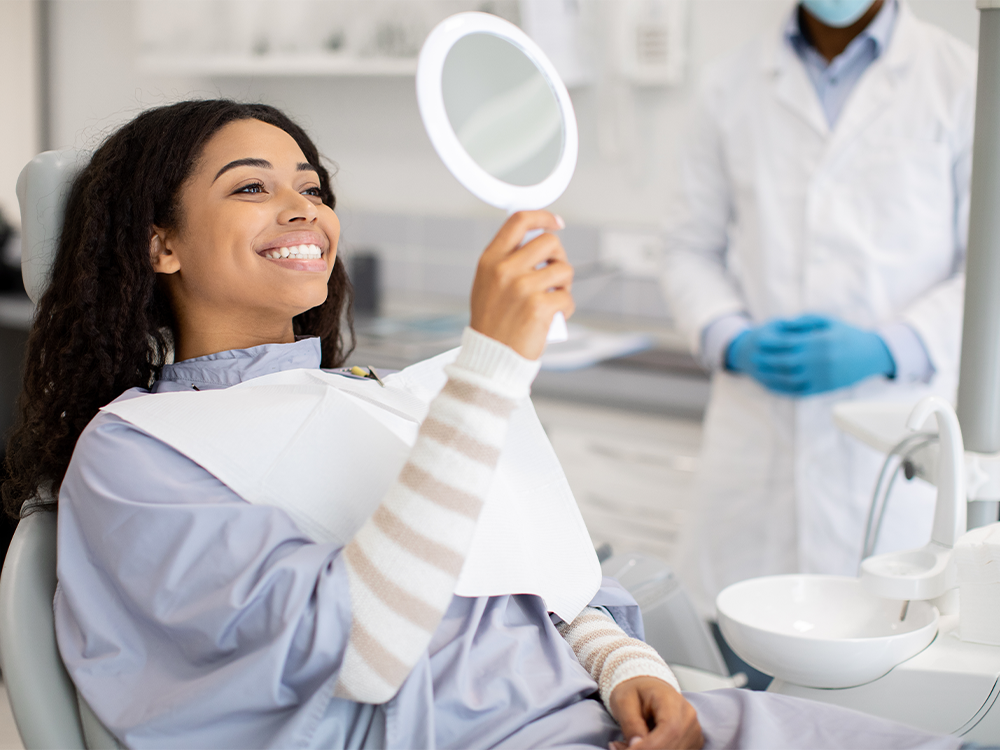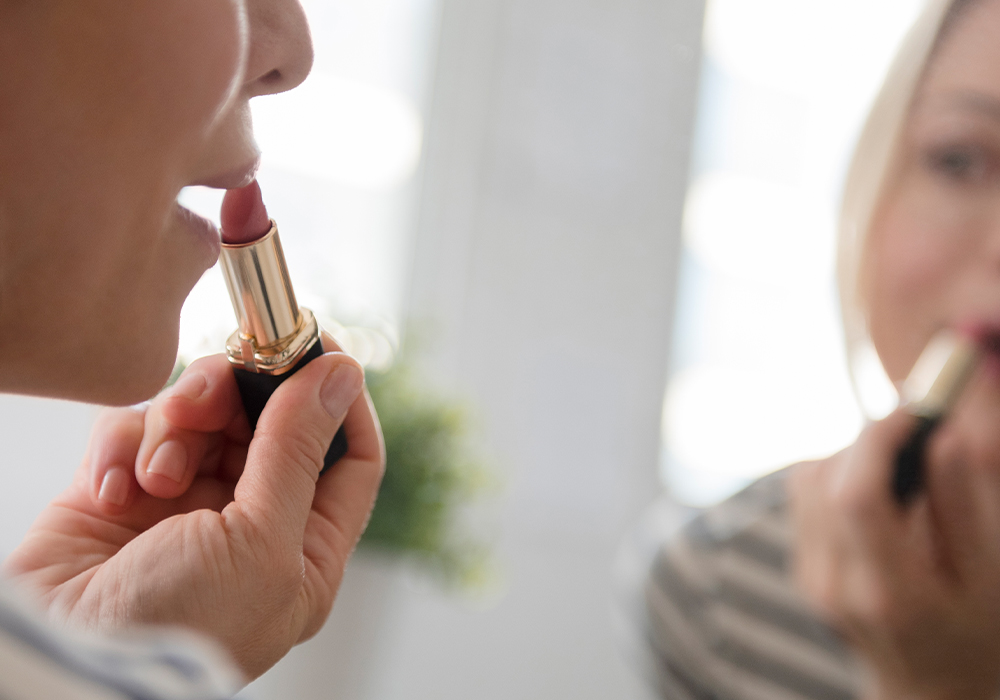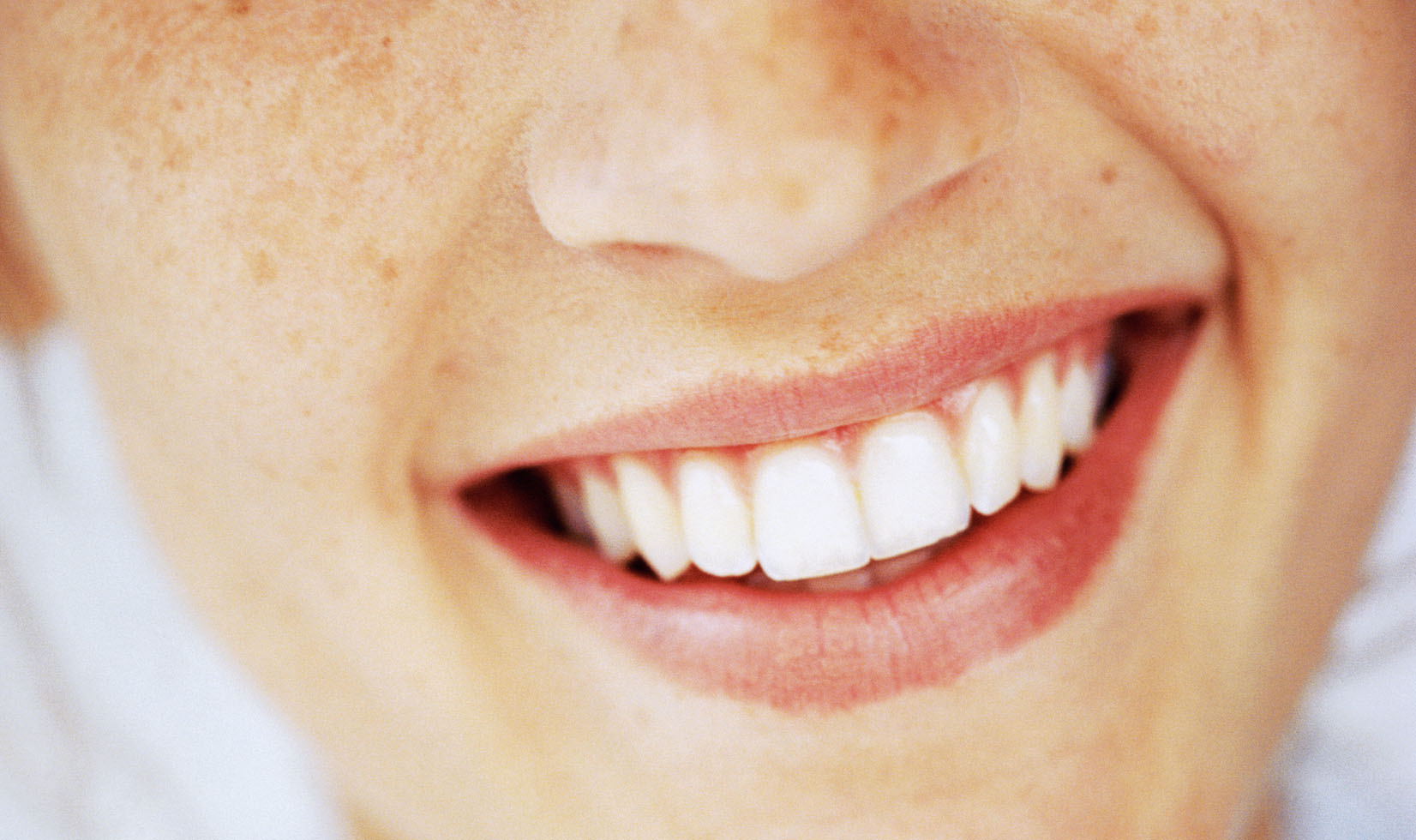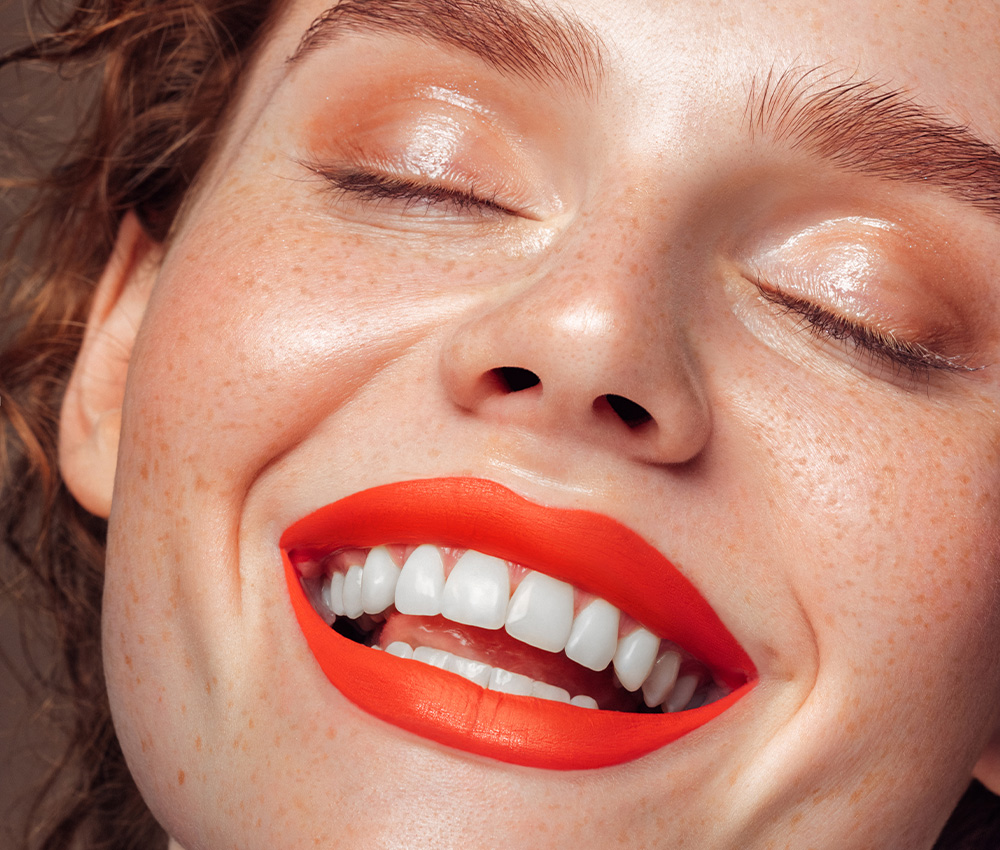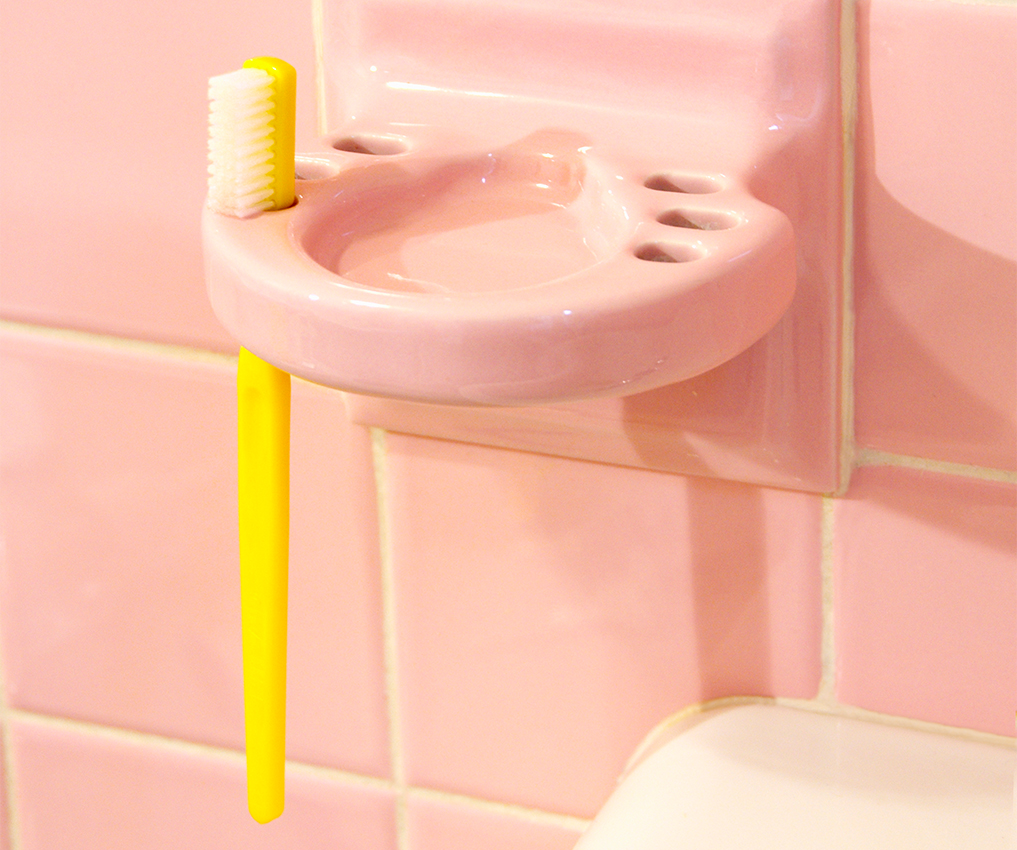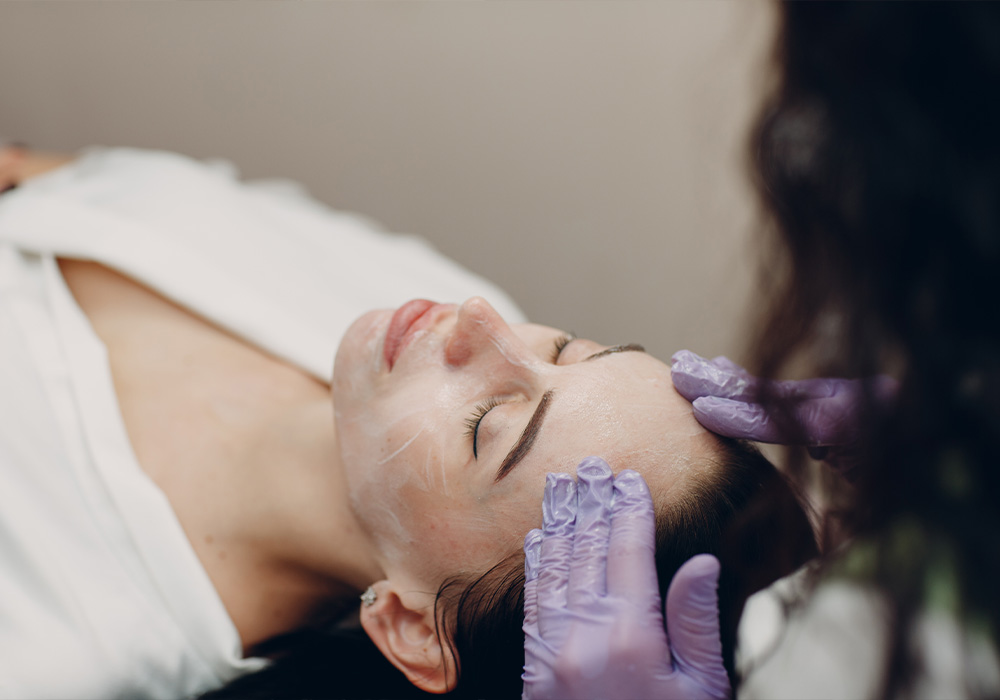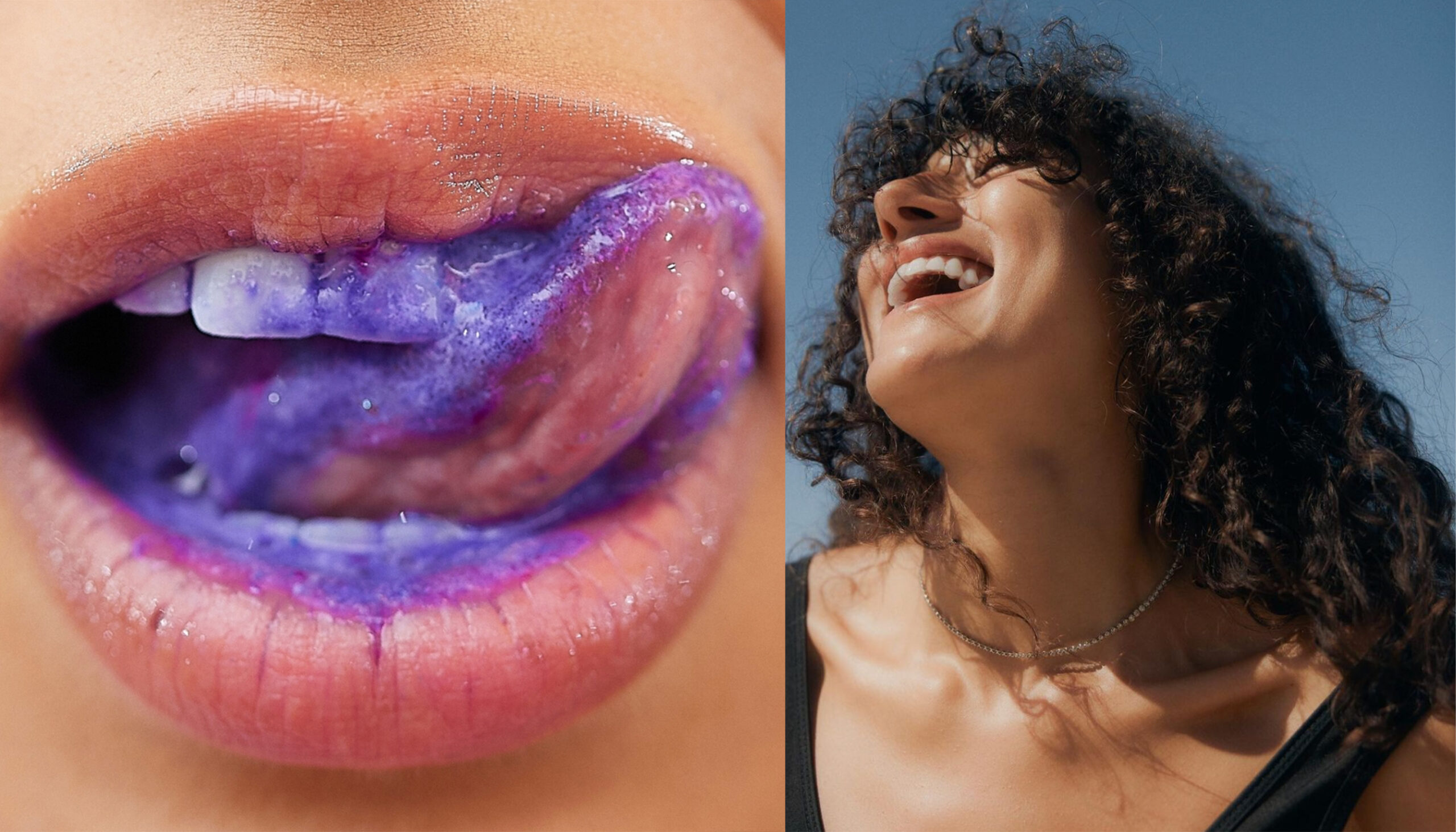If you visit the dentist for your recommended six-month cleaning, you’re familiar with the feeling of ultrasonic tools scrubbing your teeth. While this practice is essential for keeping your teeth healthy, San Francisco cosmetic dentist Swati Agarwal, DDS says there’s a better, more efficient way to clean the teeth called guided biofilm therapy. According to the dentist, it’s fast, painless and it can also pinpoint where patient’s teeth need a little more love and care.
What is guided biofilm therapy?
“Biofilm is a new-ish term that you’re going to hear a lot more of when you visit your dentist’s office. Biofilm is basically the bacteria in our mouth that colonizes and creates a film on the teeth. Think of it like the slimy rocks on the beach: After you’ve eaten and gone through the day, your teeth feel super slimy when you glide your tongue across your teeth. While every breathing human has biofilm on their teeth, what we’ve found is that it’s the culprit for dental issues like gum disease and cavities.
In my office, we use guided biofilm therapy to target this pesky biofilm, which uses a specific Swiss-made machine called the Airflow to remove the buildup. When you’ve been to the dentist previously, you’ve probably experienced the vibrating picks called ultrasonic instruments. These are what we’ve used for the past 40 years to clean the teeth, but we’ve found that they’re inefficient because they clean the mouth slowly and they can damage the gingival tissue. Do not let this deter you from your regular teeth cleanings, but let it open your mind to the benefits of the Airflow.
The Airflow uses a powder called erythritol that’s so finely milled that it does not damage the teeth or tissue at all, and it removes the biofilm much faster. It works by feeding the bacteria with sugar. When the bacteria eat it, they’re unable to digest it and they explode. So, the machine uses a combination of this powder and water to blast the biofilm off the teeth.”
Where does the “guided” part come in?
“We stain the teeth before we do the procedure, so we can see the biofilm. I always show this to my patients so they can see where they need to brush and floss better, and it helps me teach them how to target those areas.”
Is this therapy a full replacement of the ultrasonic instruments?
“Yes. The only time we still use those tools is if the patient has a calculus buildup, which is usually present on someone who hasn’t been to the dentist in a long time. After the pandemic, we often had to use the guided biofilm therapy alongside the ultrasonic instruments and hand instruments because it had been so long. Since this machine is so gentle, it cannot remove the hard deposit. If you visit the dentist regularly, you most likely won’t need that.”
Can you use this on veneers and crowns?
“I use this before I apply veneers and crowns to make sure everything is super clean before I do my restorations and so that no bacteria are trapped underneath the veneers or crowns.”
Is this technology common in dentist’s offices?
“The technology has been around a while, but it is not very common in many offices. I discovered it at a periodontist’s office, who specializes in gum and bones. Patients who typically go there have severe gum disease, but I thought to myself ‘Why are we waiting until someone’s oral health is past the point of no return to use this mechanism? Why not use it before so we can prevent the teeth from getting so bad?’ That’s why I incorporated it into my practice. This is where the future of dentistry lies, and it will become more common. It will, however, take some time to get there.”
